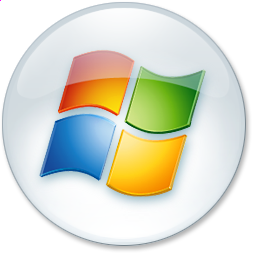Untitled Page
























© 2006 - 2008, Live News
Live News™

Version: 3.0 2









Chat with us!
Knowledge Center
Topics Available
Microsoft Live Labs Deepfish
Microsoft Live Labs Listas
Microsoft Live Labs Photosynth
Microsoft Live Labs Relay Service
Microsoft Live Labs Security Token Service
Microsoft Live Labs Volta
Live Clipboard
FeedSync
Windows Live PhotoZoom
Microsoft Live Labs Listas
Microsoft Live Labs Photosynth
Microsoft Live Labs Relay Service
Microsoft Live Labs Security Token Service
Microsoft Live Labs Volta
Live Clipboard
FeedSync
Windows Live PhotoZoom
Microsoft Live Labs
Photosynth is a software technology preview from Microsoft Live Labs and the University of Washington that analyzes digital photographs to build a three-dimensional point cloud of a photographed object. Pattern recognition components compare portions of images to create points, which are then compared to convert the image into a model. Currently, users can view models generated by Microsoft or the BBC, but not create their own models.
Microsoft has not announced any specific product plans or release dates for Photosynth. It has stated that the software will eventually be web-based and rely on user-submitted digital photos.
As of November 9, 2006 there is a free tech preview version available through Microsoft.
Microsoft teamed up with NASA on August 6, 2007 allowing users to preview its Photosynth technology showing the Space Shuttle Endeavour. On August 20, 2007, a preview showing the tiles of Endeavour during the backflip process is also available for viewing.
PROCESS
The Photosynth technology works in two steps. The first step involves the analysis of multiple photographs taken of the same area. Each photograph is processed using a Scale-invariant feature transform algorithm, which identifies specific features, for example the corner of a window frame or a door handle. Features in one photograph are then compared to and matched with the same features in the other photographs. Thus photographs of the same areas are identified. By analyzing the position of matching features within each photograph, the program can identify which photographs belong on which side of others. By analyzing subtle differences in the relationships between the features (angle, distance, etc.), the program identifies the 3D position of each feature, as well as the position and angle at which each photograph was taken. This process is known scientifically as photogrammetry, with similar products available such as Imodeller, D-Sculptor, and Rhinoceros. This first step is extremely computationally intensive, but only has to be performed once on each set of photographs.
The second step involves the intelligent display of and navigation through the 3D point cloud of features identified in the first step. This is done with the publicly downloadable Photosynth viewer. The viewer resides on a client computer and maintains a connection to a server that stores the original photographs. It enables a user to, among other things, see any of the photographs from their original vantage point. It incorporates technology Microsoft obtained through its acquisition of Seadragon in January 2006. The Seadragon technology enables smooth zooming into the high-resolution photgraphs without downloading them to the user's machine.
The Photosynth viewing software is only available to the Windows Vista and Xp operating systems.
Capabilities
3D model view of Piazza San Marco, Venice using Photosynth
Walk or fly through a scene to see photos from any angle
Zoom in or out of a photo
See where pictures were taken in relation to one another
Smoothly change viewing angle between nearby photos
Smoothly zoom in and out of high-resolution photos
Find similar photos to the one you're currently viewing
Send pictures
Microsoft has not announced any specific product plans or release dates for Photosynth. It has stated that the software will eventually be web-based and rely on user-submitted digital photos.
As of November 9, 2006 there is a free tech preview version available through Microsoft.
Microsoft teamed up with NASA on August 6, 2007 allowing users to preview its Photosynth technology showing the Space Shuttle Endeavour. On August 20, 2007, a preview showing the tiles of Endeavour during the backflip process is also available for viewing.
PROCESS
The Photosynth technology works in two steps. The first step involves the analysis of multiple photographs taken of the same area. Each photograph is processed using a Scale-invariant feature transform algorithm, which identifies specific features, for example the corner of a window frame or a door handle. Features in one photograph are then compared to and matched with the same features in the other photographs. Thus photographs of the same areas are identified. By analyzing the position of matching features within each photograph, the program can identify which photographs belong on which side of others. By analyzing subtle differences in the relationships between the features (angle, distance, etc.), the program identifies the 3D position of each feature, as well as the position and angle at which each photograph was taken. This process is known scientifically as photogrammetry, with similar products available such as Imodeller, D-Sculptor, and Rhinoceros. This first step is extremely computationally intensive, but only has to be performed once on each set of photographs.
The second step involves the intelligent display of and navigation through the 3D point cloud of features identified in the first step. This is done with the publicly downloadable Photosynth viewer. The viewer resides on a client computer and maintains a connection to a server that stores the original photographs. It enables a user to, among other things, see any of the photographs from their original vantage point. It incorporates technology Microsoft obtained through its acquisition of Seadragon in January 2006. The Seadragon technology enables smooth zooming into the high-resolution photgraphs without downloading them to the user's machine.
The Photosynth viewing software is only available to the Windows Vista and Xp operating systems.
Capabilities
3D model view of Piazza San Marco, Venice using Photosynth
Walk or fly through a scene to see photos from any angle
Zoom in or out of a photo
See where pictures were taken in relation to one another
Smoothly change viewing angle between nearby photos
Smoothly zoom in and out of high-resolution photos
Find similar photos to the one you're currently viewing
Send pictures
Microsoft Live Labs Photosynth





Latest Release: Beta / Nov 9, 2006

